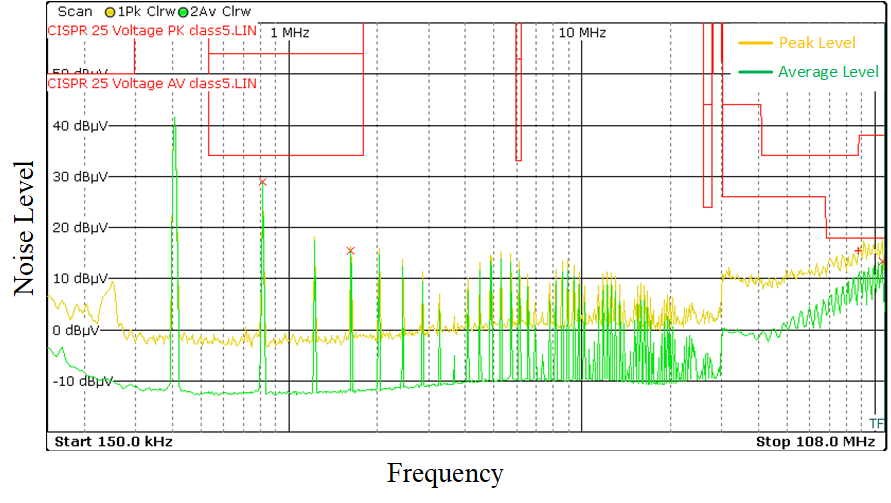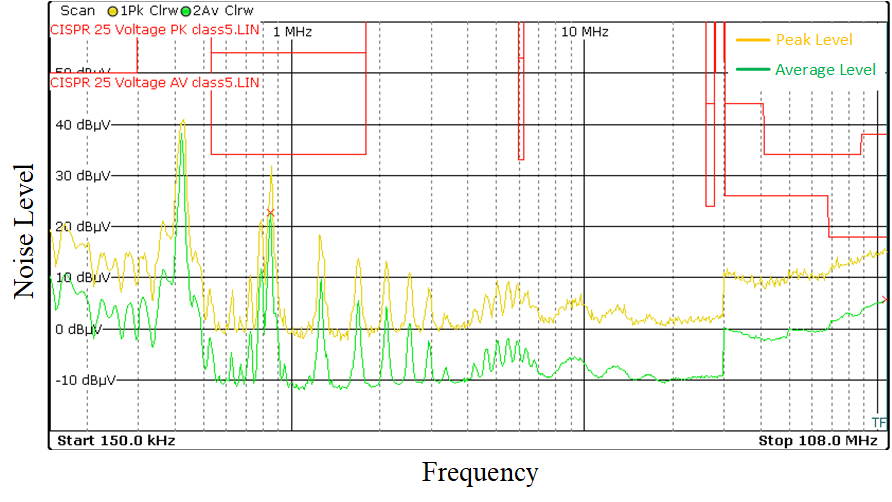SNVAA93 December 2023 LM65645-Q1 , LM70660 , LM706A0 , LM706A0-Q1 , LM70840 , LM70840-Q1 , LM70860 , LM70860-Q1 , LM70880 , LM70880-Q1 , LMR38020-Q1 , LMR38025-Q1
3.4 Spread Spectrum
Spread spectrum is a technique that works by converting an EMI source signal into a wide-band signal. This spreading of energy over multiple frequencies helps to reduce the noise amplitude, resulting in an overall improvement in EMI performance.
Figure 3-18 and Figure 3-25 present the EMI results of the LMR38020Q without spread spectrum and with spread spectrum. It can be observed that the noise level of the spread spectrum version is 5dB lower at switching frequency and its harmonics, and 10dB lower in the FM band. This demonstrates that the implementation of spread spectrum can significantly enhance EMI performance in an automotive 48V DC system.
 Figure 3-18 Conducted EMI Result Without Spread Spectrum
Figure 3-18 Conducted EMI Result Without Spread Spectrum Figure 3-19 Conducted EMI Result With Spread Spectrum
Figure 3-19 Conducted EMI Result With Spread Spectrum